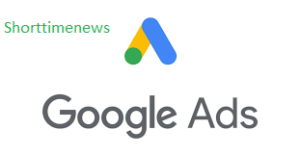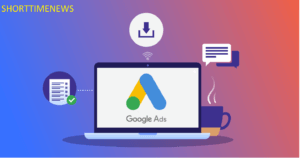In today’s fast-paced digital world, businesses are constantly seeking ways to connect with their target audience and stand out amidst the online noise. Googel Ads.

Introduction
In the ever-evolving landscape of digital marketing, Googel Ads continues to be a powerful tool for businesses looking to enhance their online visibility and drive targeted traffic to their websites.
Crafting a successful Googel Ads campaign requires a strategic approach and a deep understanding of the platform’s features.
In this article, we will explore the best practices for applying Googel Ads to achieve optimal results.
What is Googel Ads?
Googel Ads, formerly known as Googel Ads Words, is an online advertising platform developed by Googel.
It allows businesses to create and run targeted ads on Googel ‘s vast network, which includes search results, websites, mobile apps, and video content. .
The platform operates on a pay-per-click (PPC) model, meaning advertisers only pay when users click on their ads.

How Does Googel Ads Work?
At its core, Googel Ads operates through an auction system.
Advertisers bid on keywords relevant to their products or services.
When users conduct searches using those keywords, an automated auction takes place to determine which ads will be displayed and in what order.
The auction considers various factors, including bid amount, ad quality, and relevance.

Key Components of Googel Ads:
- Campaigns: These are the top-level organizational structures in Googel Ads, where you set your advertising objectives, budget, and targeting preferences.
- Ad Groups: Within campaigns, you create ad groups to group together related keywords and ads.
- This allows for more targeted messaging and better control over your advertising strategy.
- Keywords: The foundation of Googel Ads revolves around selecting relevant keywords that trigger your ads when users search for specific terms. Keyword selection is a critical aspect of campaign success.
- Ad Copy: Craft compelling ad copy to entice users to click on your ads.
- This includes headlines, descriptions, and a call-to-action that encourages users to take the desired action.
- Landing Pages: The pages users are directed to after clicking on your ads. Optimizing these pages for a seamless user experience is essential for achieving your campaign goals.
- Thorough Keyword Research:
One of the foundational steps in creating a successful Googel Ads campaign is conducting thorough keyword research.
Identify the keywords and phrases relevant to your business, products, or services.
Utilize tools like Googel Keyword Planner to discover relevant search terms, assess their search volumes, and choose those that align with your goals.

- Compelling Ad Copy:
Crafting compelling ad copy is crucial to capturing the attention of your target audience. Ensure that your headlines are attention-grabbing, your descriptions are concise yet informative, and your call-to-action is clear.
A/B testing different variations of your ad copy can help you identify the most effective messaging.
- Landing Page Optimization:
Once users click on your ad, it’s essential to provide them with a seamless and relevant experience on your landing page.
Optimize your landing pages for the specific keywords and ensure a clear and compelling call-to-action.
A well-designed, user-friendly landing page can significantly impact your conversion rates.
- Ad Extensions:
Take advantage of Googel Ads’ ad extension options to provide additional information to potential customers.
Extensions like site link, callout, and structured snippet extensions can enhance your ad’s visibility and provide users with more reasons to click.
- Targeting and Audience Segmentation:
Refine your audience targeting to ensure your ads are reaching the right people.
Googel Ads offers various targeting options, including demographics, location, interests, and remarketing.
Tailor your campaigns to specific audience segments to improve relevance and increase the likelihood of conversions.
- Bid Management:
Effective bid management is crucial for maximizing your budget and achieving a positive return on investment (ROI).
Monitor your campaigns regularly, adjust bids based on performance, and consider automated bidding strategies to optimize for specific goals like conversions or clicks.
- Conversion Tracking:
Implement conversion tracking to measure the success of your campaigns accurately. Track key actions on your website, such as form submissions, purchases, or sign-ups. This data provides valuable insights into the effectiveness of your ads and helps you make informed adjustments to improve performance.

- Regular Monitoring and Optimization:
Googel Ads is dynamic, and market conditions can change rapidly. Regularly monitor your campaign performance, assess key metrics, and make data-driven adjustments. Experiment with different ad creatives, targeting options, and bidding strategies to find the optimal combination for your goals.
Conclusion:
Mastering Googel Ads requires a combination of strategic planning, continuous optimization, and a keen understanding of your target audience.
By implementing these best practices, businesses can unlock the full potential of Googel Ads, driving quality traffic and achieving their online marketing objectives.
Stay informed about industry trends, adapt to changes in the digital landscape, and consistently refine your approach to ensure sustained success with Googel Ads.
